
The capital and most populous city in the West-African nation of Guinea, Conakry is rarely visited by foreign tourists, and as such, probably isn’t palatable for everyone. With its population skyrocketing from merely 50,000 residents following the independence from France in 1958, to almost two million as of 2021, the streets are constantly inundated with people, informal commerce and hectic traffic, whilst surprisingly, the city’s periphery is still home to plenty of unspoiled hidden gems.
Nestled 4.5 kilometers off the coast of Conakry, the archipelago of Îles de Los is a refreshing respite from the Guinean capital’s sheer hustle and bustle. Interestingly, the archipelago’s name derives from the Portuguese word for idols as a reference for the numerous wooden sculptures that were discovered by the first European explorers who arrived to the region.
Out of the archipelago’s 15 islands, only three are inhabited, accessible either by a 10AM-6PM water taxi service (0.5 €) or a private pirogue (5-12 €), both of which are available at the city’s Boulbinet Port. None of the islands has paved roads or cars, therefore the only viable way to get around except for walking is by a motorcycle taxi.
The most populated among the islands, Île de Kassa is also the closest to the mainland, taking about 20 minutes to reach from Conakry. It’s historically known as the Factory Island due to the local boat repairing workshop that was established by European colonialists, who also mined the once abundant bauxite mineral deposits, as evidenced by the multiple scars across the landscape, particularly in the north. Nowadays, Île de Kassa serves as a popular weekend getaway for Conakry residents who swarm its golden and insanely wide beaches, littered with granite boulders and coconut trees.
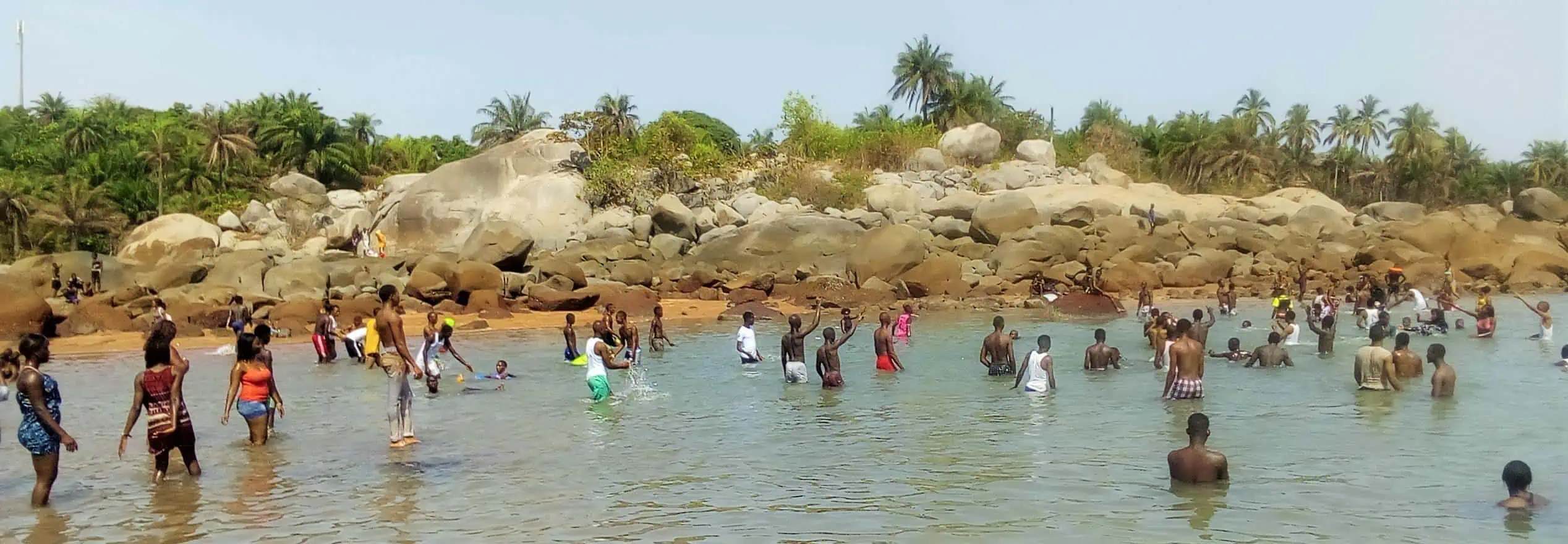
Île de Kassa's beach during a busy weekend
photography by: Aboubacarkhoraa/ Wikimedia Commons
The smallest among the inhabited islands, Île de Roume is far less visited than its larger counterparts, and thus, more authentic in nature. The renowned Scottish author, Louis Stevenson, was allegedly inspired by the island when writing his Treasure Island novel, albeit it was never actually verified. The British affinity to Île de Roume extends well beyond the realm of literature, as the island, formerly named “Crawford Island” by the Brits, functioned as an operational base to intercept slave boats. In fact, remnants of a British fortress can still be found deep within the island’s rainforest.
The 7.9-kilometer long Île de Tamara is the largest in the archipelago, as well as the furthest away from the mainland. Unlike Kassa and Roume, Tamara is sparsely populated and wild, with jungles covering most of its surface.
Constructed by the French in 1905 to provide guidance for vessels on their way to Conakry, the Île Tamara Lighthouse is merely 10 meter tall, however, as it perches on a giant rock at a hilly area, its elevation stands at 95 meters, rewarding its visitors with expansive ocean views. The other major attraction of the island is the Fotoba Prison that once housed felons who were sentenced for more than 2 years, and later functioned as a center for people with highly infectious disease. The prison, notorious for its forced labor, is long abandoned, with its delipidated buildings being slowly, but steadily reclaimed by the surrounding rainforest.
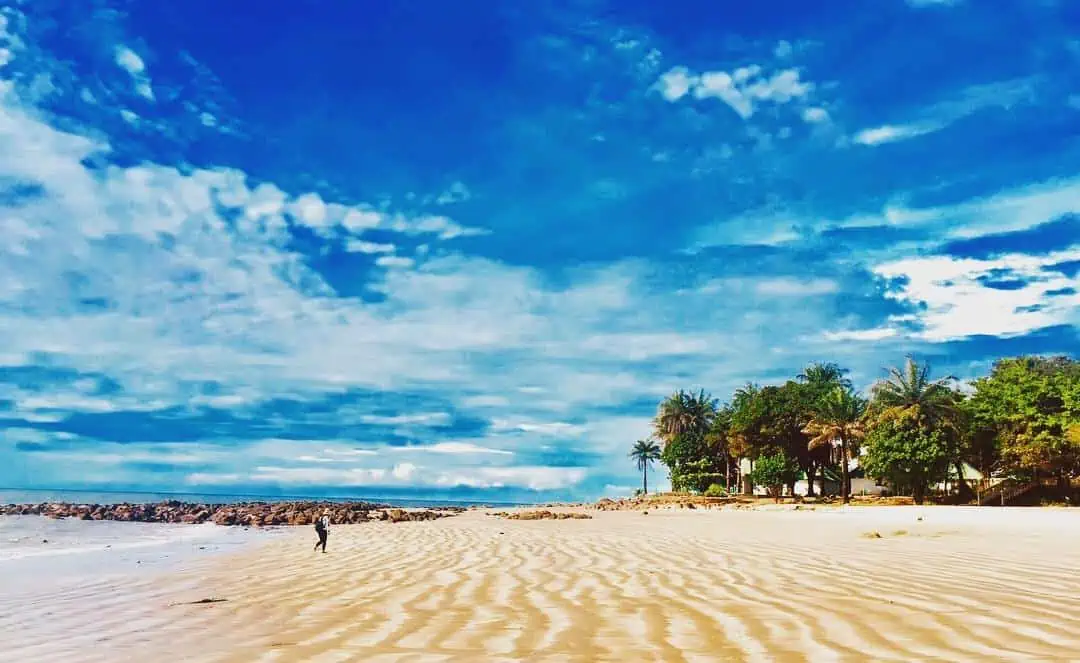
One of Île de Kassa's vast beaches
photography by: Rubyyang917/ Wikimedia Commons
It’s difficult to overstate how a small rectangular plot of land in the middle of the Guinean capital tells the turbulent story of the nascent nation. Wedged between the city’s 6th and 5th Avenues, the presidential palace of Guinea is a relatively new building, yet its predecessor, the governor’s house, a colonial style edifice, far predates the country’s independence, serving for decades as the office and residence of the French governor.
Following Guinea’s independence in 1958, the governor house was turned into the official seat of the country’s first president, Ahmed Sékou Touré.
The colonial style house was ultimately demolished in 1983, and in 1998, a brand-new presidential palace was built in the exact same location by a Chinese construction firm, a widespread phenomenon across Africa. The lavish grand-scale building was named Palais Sékhoutouréya as a gesture to the country’s former president, as “Sékhoutouréya” means “at Sékou Touré” in the local Sousou language.
The flamboyant political fortress sharply contrasts the perpetual chaotic sights of Conakry, featuring a trimmed triangular façade, bisected by an entrance tower whose frontal side carries a golden replica of the national emblem.
It wasn’t until 2010, when Alpha Condé was elected president, that the building actually fulfilled its designated role as the president’s official residence. As recently as September 2021, the palace has been the epicenter of a military coup that ousted the president, and so, the only feasible way of appreciating its architecture and political significance is currently limited to beholding the building from a safe distance.
Any brief look at a satellite image of Guinea will instantly reveal its green carpet of forestry and savannahs, particularly around the capital, where one can find Africa’s westernmost rainforest, also known as the Western Guinean lowland forest.
While the country’s rapidly growing population constantly encroaches on the surrounding woodlands, a small piece of wild jungle in the heart of the Guinean capital encapsulates the local rich flora, serving as an appetizer for the sheer wilderness out there.
Despite its branding as botanical gardens, Conakry’s largest green lung is more reminiscent of a wild rainforest rather than a well-maintained collection of plants. Dominated by the formidable kapok trees, the gardens are a great hideaway to explore, insulated from the city’s excruciating sun and frantic streets. Take note that guided tours of the gardens are often aggressively offered at the entrance, some of which by uniformed soldiers.
With 90 percent of its population adhering to Islam, Guinea is a predominantly Muslim country and as such, has a significant number of mosques, yet none of which don’t even come close to the sheer grandiosity of Conakry Grand Mosque. Aka Mosquée Fayçal, the mosque was inaugurated in 1982, during the presidency of Ahmed Sékou Touré, and was almost fully financed by the Saudi King.
With a staggering capacity of 2,500 women at the upper level and 10,000 men at the ground floor, as well as over 10,000 worshipers at the backyard, the mosque is the fourth largest across the continent and the largest one in Sub-Saharan Africa. Dominated by 4 gargantuan minarets, the mosque is almost entirely beige-colored, accompanied by small patches of green-hued elements, representing the Islamic faith.
The mosque’s surrounding gardens are home to the Mausoleum of Camayanne, accommodating the tombs of the nation’s most revered figures, including the pre-independence ruler of Labé province, Alfa Yaya Maudo, the founder of the Wassoulou Empire that predated the modern-day Guinea, Samori Ture, and most importantly, Ahmed Sékou Touré, the country’s first president.
Located northeast of the mentioned-above botanical gardens, the mosque can be visited by foreigners, yet it’s worth noting that taking off your shoes upon entrance is mandatory, while women are also obliged to wear a headscarf. While there isn’t any official admission fee, due to a lack of fundings and the subsequent inadequate maintenance, you’ll probably be asked to make a donation.
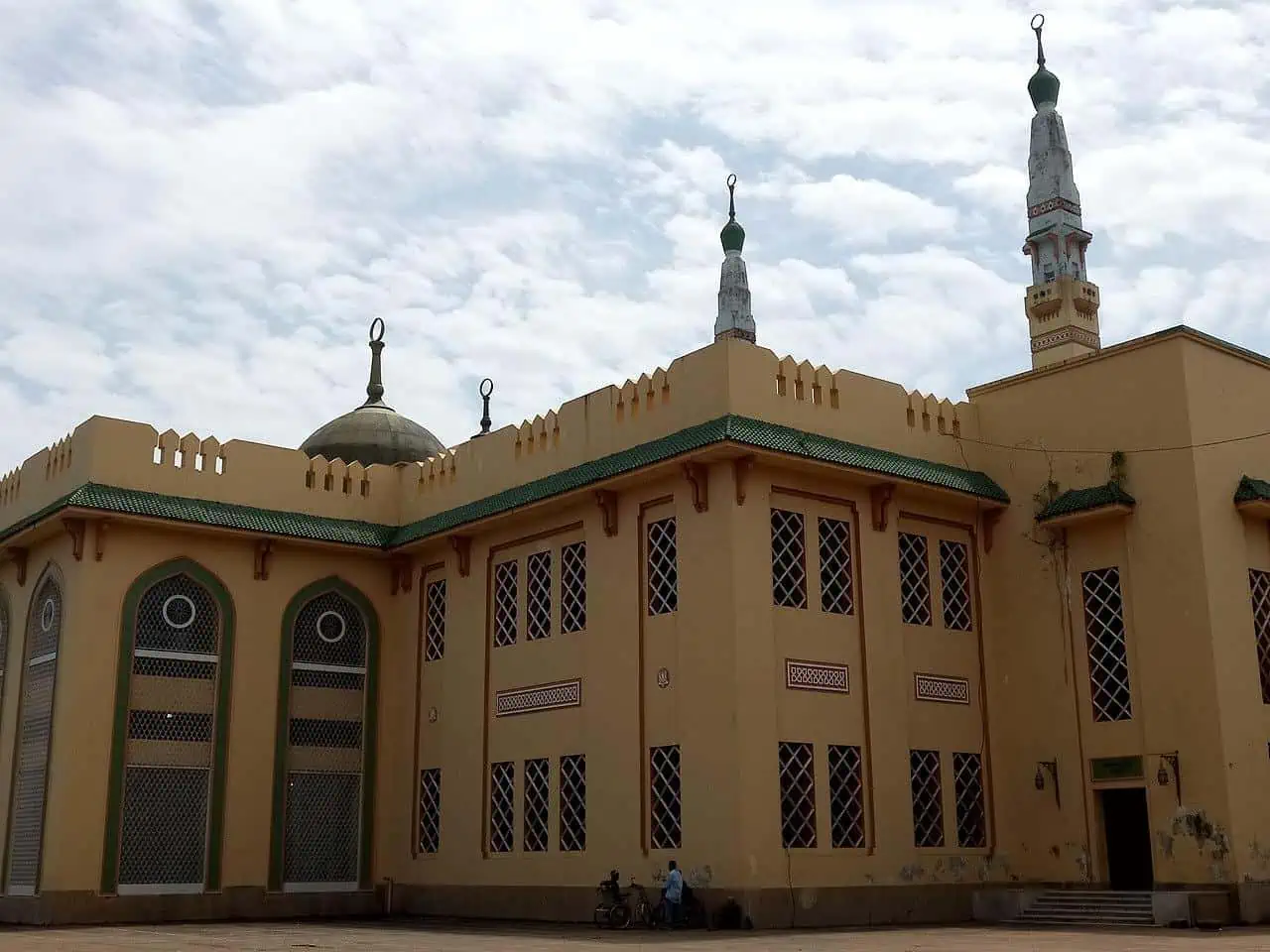
The Grande Mosquée de Conakry
photography by: NDOIALLAH MICKAEL ANDJIBAYE/ Wikimedia Commons
Nestled along the midtown N1 road, Jardin 2 Octobre is Conakry’s sole amusement park, and while the place is far cry from even the basic standards for a facility of its kind, its semi-abandonment as well as the weirdly shaped sculptures and recreational equipment are extremely interesting to explore. Following decades of dereliction since its creation, the garden was renovated and reopened in 2009, nonetheless, it is only partly maintained, resulting in a mosaic of well-kept zones alongside pockets of wilderness and dilapidation.
Supposedly designed for children, the park is in fact an open-air museum showcasing unusual African art rather than simply a toddler playground. Among the many quirky things you can find here are slides attached to a mustached face-shaped tower, a kitschy fortress-like structure covered with colorful murals and a large scale futuristic sculpture of a robot popping out of a nondescript building, all of which are accompanied by rowdy peacocks and craftsmen selling their wooden knickknacks.
The quaint green complex is a short distance from the Monument du 22 Novembre, a marble cairn memorial that commemorates those who died in the 1970’s failed Portuguese-led coup d’état and Palais du Peuple, one of Guinea’s largest buildings and the current seat of the national assembly.
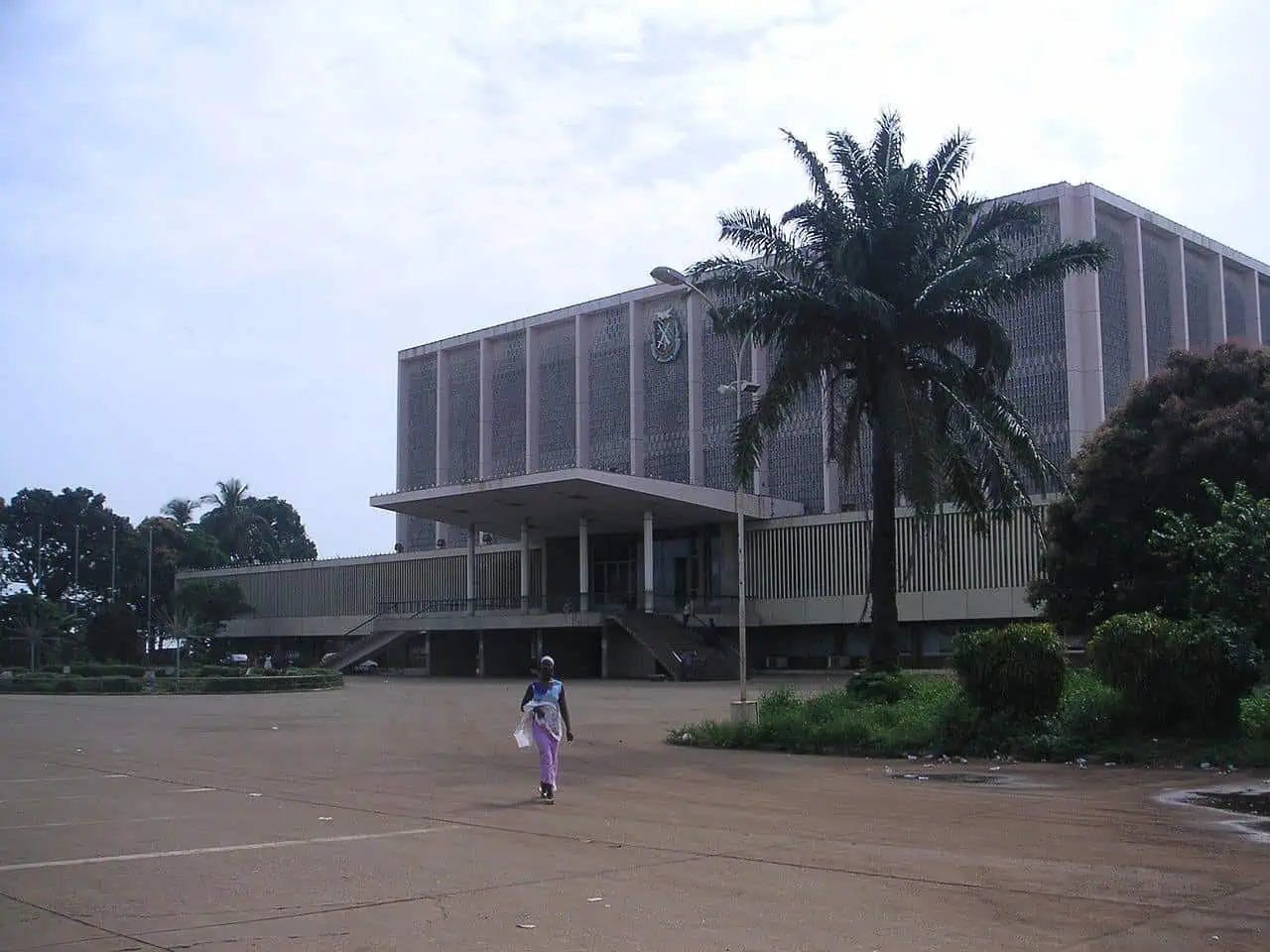
The Palais du Peuple, home to Guinea's National Assembly
photography by: uruguay-panama/ Flickr
Brimming with incalculable number of hawkers, the streets of Conakry are intense as if the entire city was a large single market. Amid this frenzy urban reality, Conakry’s markets might seem like an insignificant segment of a seamless chaotic scenery, and yet, one market in particular, Marché Madina, appears to stand out.
Situated on the capital’s Madina neighborhood, Marché Madina is one of West Africa’s largest markets, boasting a mind-boggling hodgepodge of practically everything, ranging from ample agricultural produce, pyramid-shaped piles of spices, traditional African garments and souvenirs, cheap Chinese merchandise to dozens of street-food stalls.
Whilst the market’s dark and crowded maze is definitely not for the faint hearted, it provides an authentic glimpse of the city and by large extent, the entire country as well.
Since the market is regularly frequented by pickpockets, it is warmly recommended to keep your valuables at the hotel room while leaving only a small amount of money in your pockets while there.
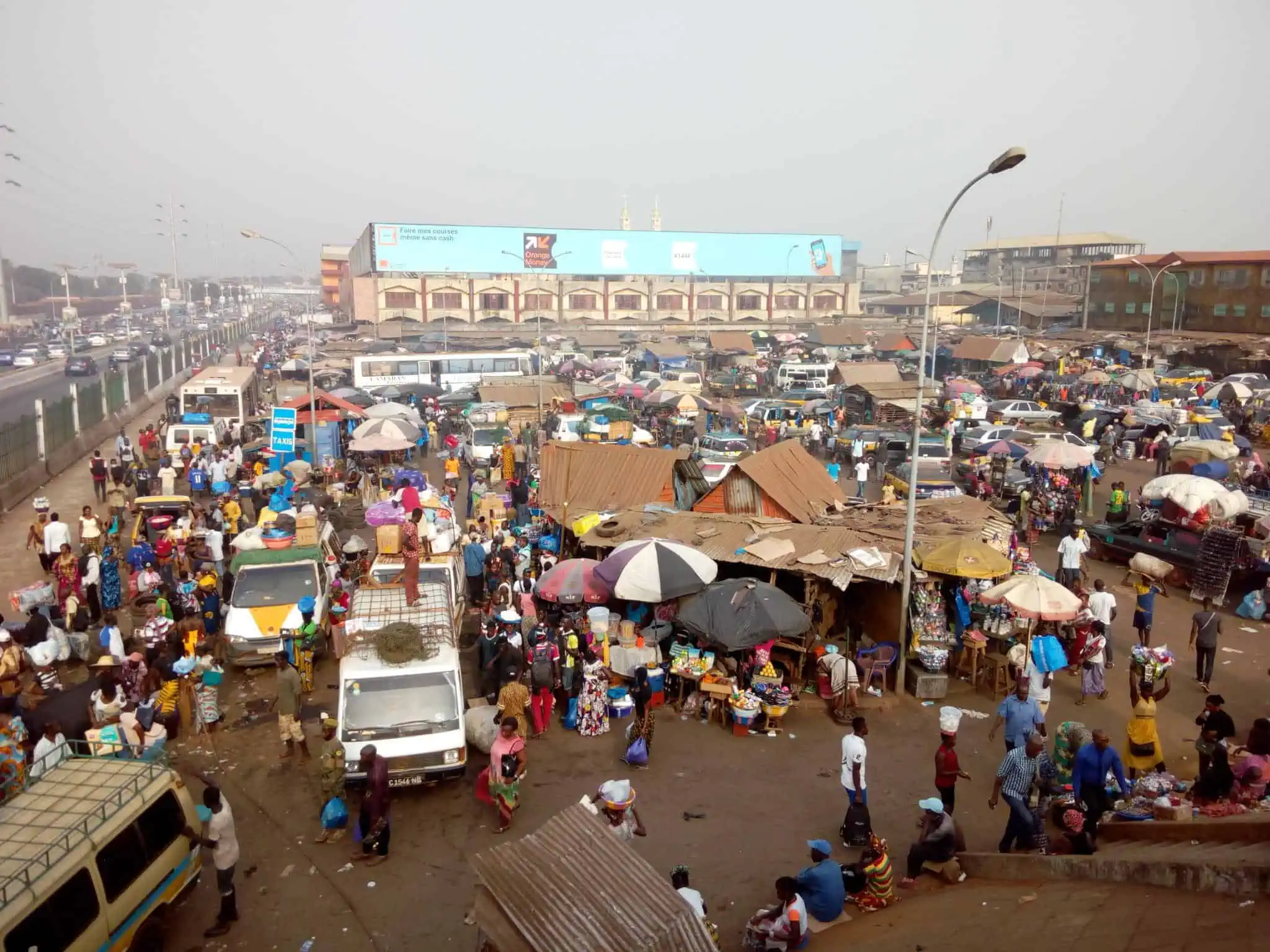
The bustling outskirts of Marché Madina
photography by: Alpha Oumar Baldé/ Flickr
Stretching along a finger-shaped peninsula, Conakry’s coastal context is dominant in every facet of its existence, as its residents are largely dependent on the nearby ocean for their livelihood.
There is probably no place that better reflects the city’s deep connection to its maritime environment than its old fishing wharf, known locally as Port du Boulbinet.
Located at the southern tip of the Guinean capital’s Kaloum district, the port has a dual role, as it functions both as an artisanal fishing quay and a hub for taxi-boats making the round trip to and from the close-by archipelago of Îles de Los. Unlike similar places worldwide, this bustling port is neither touristy nor particularly welcoming, and yet the hundreds of pirogues lined next to each other is a mesmerizing sight to behold.
Since the harbor is almost always busy, when there, one can watch fishermen venturing out to the ocean, while at the same time, their returning peers unloading their daily catch.
Additionally, the port’s surrounding streets are teeming with activity, including vendors selling a plethora of seafood alongside restaurants that offer freshly caught fish or smoked machoiron with rice.
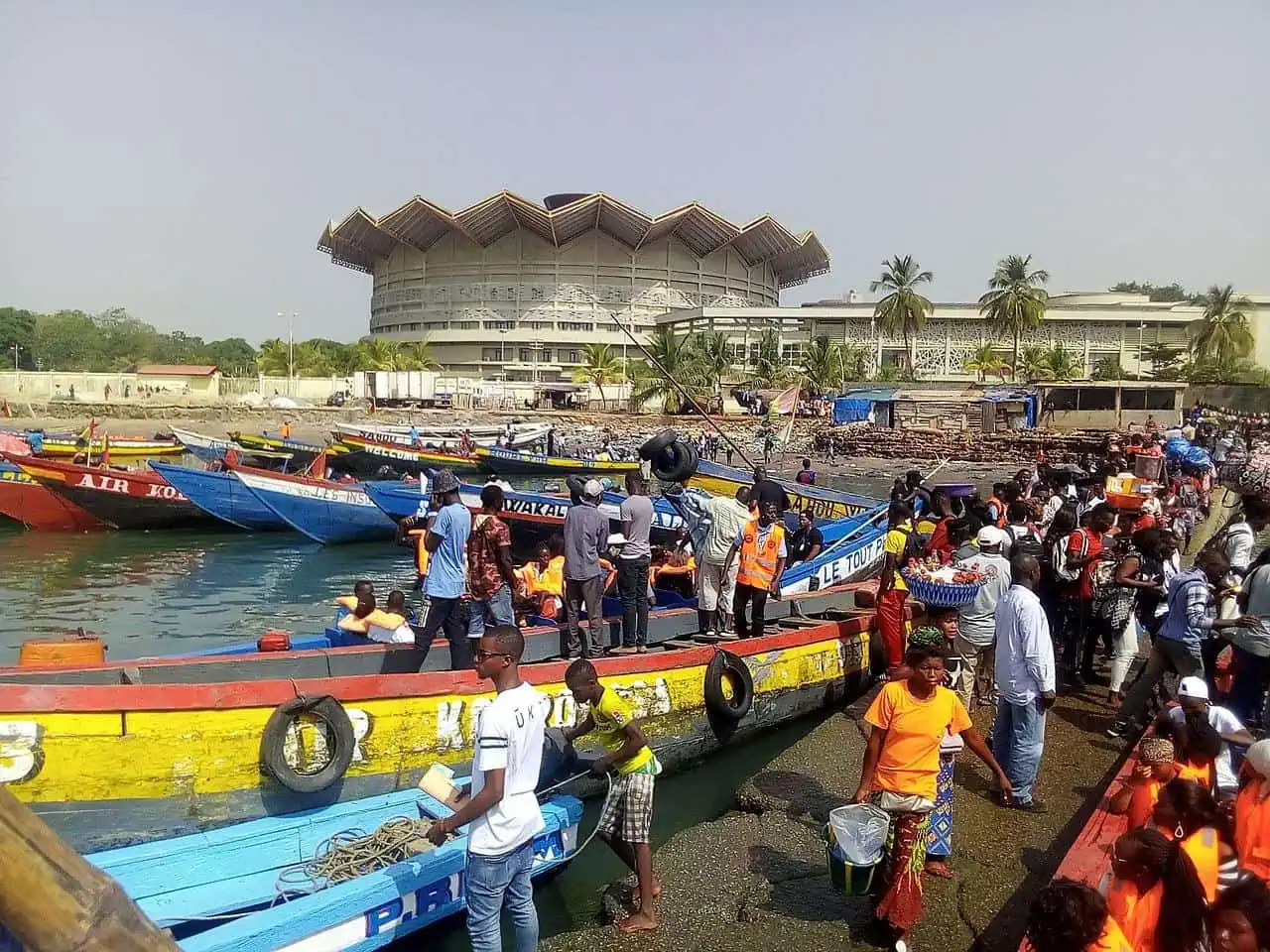
Port du Boulbinet with Palais des Nations looming in the background
photography by: Aboubacarkhoraa/ Wikimedia Commons
After spending a few days in Conakry, the city’s hubbub might be too hard to swallow, but before you rethink your plans, you’ll be surprised to learn that the hectic metropolis is in fact surrounded by tens of hidden gems, one of which, the Soumba Waterfalls, serves as the perfect getaway.
Located north of the capital’s suburb of Dubreka, the waterfalls are 70 kilometers from downtown Conakry, taking about 1.5 hours to reach. The 50-meter wide and 15-meter-tall waterfalls cascade through a series of naturally formed stairs, before flowing into a couple of swimmable natural pools. Overlooking the waterfall is a two-story restaurant that offers an assortment of local scrumptious food, with the dining area positioned on a spacious balcony, bestowed with spectacular views of the waterfalls and the surrounding pools.
The best time to visit the falls is during the rainy season (June to November), as the site often dries out around April and thus, far less attractive to visit. Apparently, the waterfalls’ admission fee varies from time to time, ranging anywhere from 5,000 FG to 20,000 FG (0.5$-2.0$).
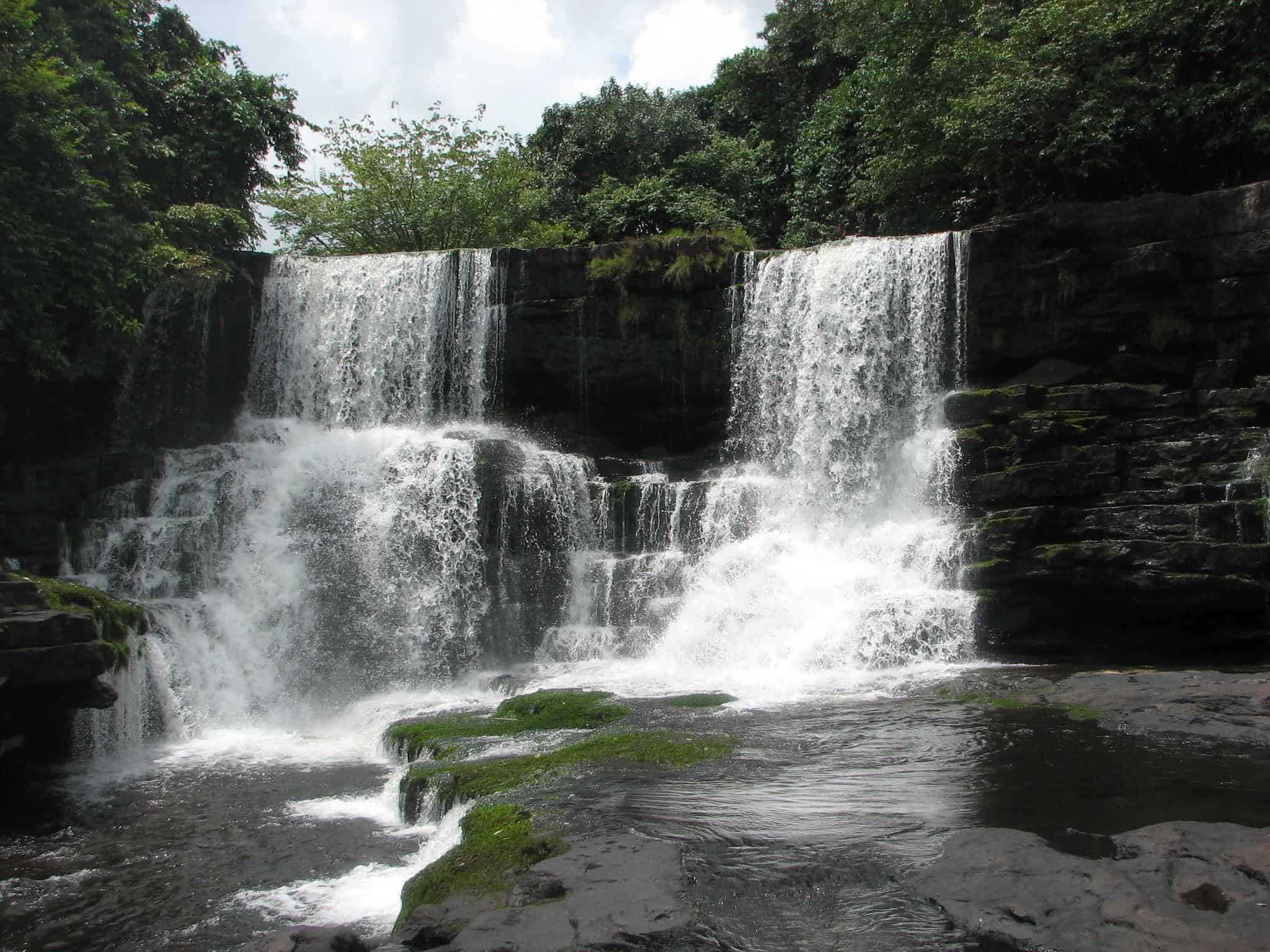
Soumba Waterfalls at their fullest glory
photography by: Frank in Guinea/ Flickr